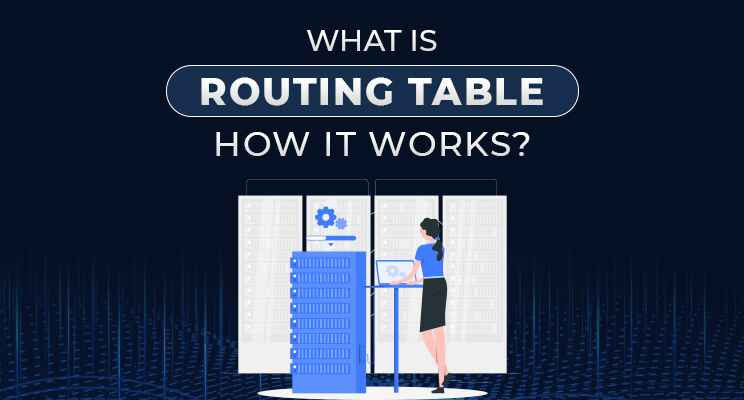views
What Is a Routing Table? An Explanation of Route, Router, and Routing Tables in Networks
In the digital age, data is king—and how it moves over a network is key. That's where routing tables, routers, and routes enter the picture. If you're working with or studying computer networks, knowing how routing operates is key to both performance and security.
At UniNets, we deal with the training of network professionals on network basics, advanced routing protocols, and the incorporation of cyber security tools to protect network environments. This article provides an in-depth overview of routing tables in computer networks and their applications in contemporary IT and cloud systems.

What Is a Routing Table?
A routing table is a collection of rules or routes in a router or networked PC that dictates how data packets must be routed to their destination. Such tables play a crucial role in directing internet traffic securely and effectively.
Major Components of a Routing Table:
Destination: The receiving network's IP address.
Subnet Mask: Determined by the range of the network.
Next Hop: The next IP address where the data packet must be routed.
Interface: The interface on the network which forwards the packet.
Metric: The route cost (lower is preferred).
Routing Table in Computer Networks
A routing table in computer networks exists in any device that forwards data—like routers, switches, firewalls, and even servers. These routing tables allow the most cost-effective and secure route to be taken for every packet of data.
There are two primary forms of routing tables
Static Routing Tables – Manually set by network administrators.
Dynamic Routing Tables – Updated automatically via protocols such as OSPF, BGP, or EIGRP.
Call it a router table, route table, or simply a routing table; it provides the same important function: directing traffic.
What Is a Router Table vs Route Table?
While often used interchangeably, let's make clear:
Router Table: Typically refers to the routing table on a physical or virtual router device.
Route Table: More generic, also utilized in cloud computing to specify network routes (such as in GCP or AWS).
Role of Routing Tables in Cybersecurity
A correctly set routing table not only optimizes efficiency but further ensures the security of the network. Incorrect or rogue routing entries may result in:
Data interception
Packet loss
Unauthorized access
In order to counter these threats, IT experts deploy various network security tools and information security tools to track routing traffic and identify anomalies.
At UniNets, we focus on the convergence of cyber security devices with routing infrastructure to deliver stacked defenses.
Routing Tables in the Cloud (GCP Use Case)
Cloud platforms such as Google Cloud Platform (GCP) use route tables to regulate how traffic flows within Virtual Private Clouds (VPCs).
Example:
In GCP:
Custom Route Tables enable you to specify how data passes between subnets or to outside networks.
Security is augmented through technologies of the list of Google Cloud services such as Cloud Armor and Firewall Rules.
See:
Google Cloud platform products list
Google Cloud platform services list
These links describe native GCP products meant to maximize performance and security of your routing configurations.
Parts of Computer Network Concerning Routing
Routing is not solo—it communicates with several network elements that make up the overall network infrastructure.
Applicable Networking Parts:
Routers – Interpret and implement routing table.
Switches – Operate in the local network to pass packets.
Firewalls – Implement security policies for routed traffic.
Network Interfaces – Function as route direction endpoints.
Collectively, all these pieces in computer network components a web of computer network hardware and software essential for routing decisions.
Integrating Security Tools with Routing
Securing the routing is as crucial as deploying it. Here's how IT security tools and cybersecurity tools can assist:
Firewall Tools: Block routes based on destination/source.
SIEM Systems: Monitor routing logs for anomalies.
Penetration Testing Tools: Evaluate routing vulnerabilities.
Some of the most popular tools in this category include:
Wireshark (for packet analysis)
Snort (for intrusion prevention)
Nessus (for vulnerability scanning)
tools belong to wider categories such as network security tools, information security tools, and cyber security tool suites deployed in enterprise networks.
Real-World Training at UniNets
At UniNets, we realize that routing is the foundation of network architecture. That is why our training courses touch on:
and dynamic routing table configuration
Routing protocol implementation
Route table management in GCP and other cloud providers
Security tool integration to monitor and secure routes
Computer network mapping with current IT requirements
Our lab environment offers students hands-on access to actual devices and virtual simulations, such as GCP services and cloud routing setup.
Conclusion
So, what is a routing table? It's not just a list—it's a fundamental building block that dictates data routing between physical, virtual, and cloud networks. Whether you're implementing a router table for a small office or working with route tables in a distributed GCP setup, knowledge of routing is key.
When combined with robust cybersecurity software and synchronized with secure networking devices, routing tables assist IT experts in the construction of robust, scalable, and secure networks.
We at UniNets close the gap between textbooks and actual deployment, enabling you to excel both in routing technology and information security technologies.















![What Is The QuickBooks Enterprise Support Number [[GET Quick Assistance]]](https://timessquarereporter.com/business/public/index.php/upload/media/posts/2025-06/04/what-is-the-quickbooks-enterprise-support-number-get-quick-assistance_1749095947-s.jpg)






Comments
0 comment